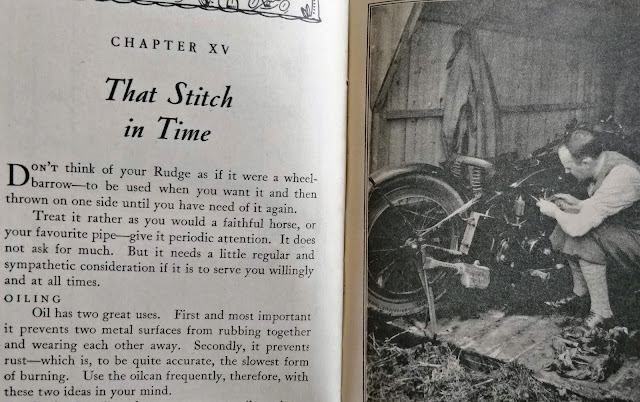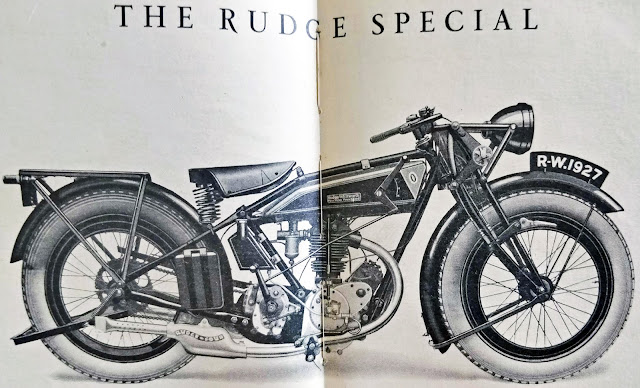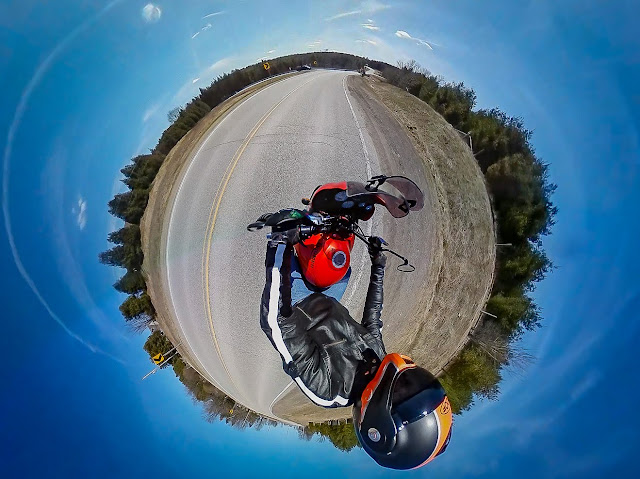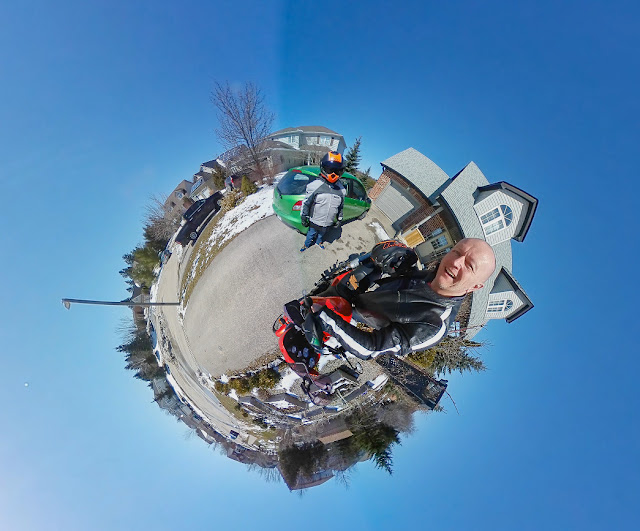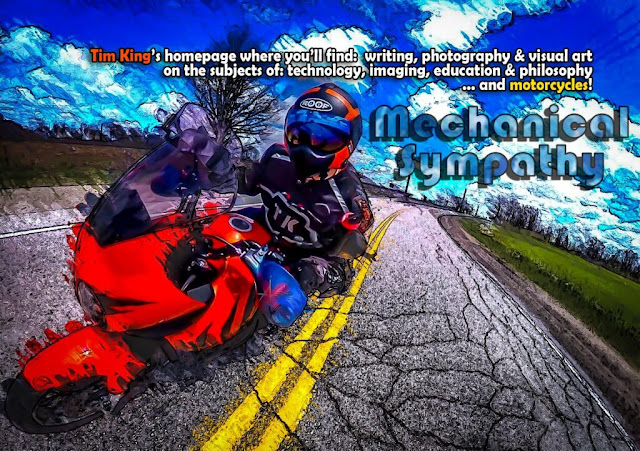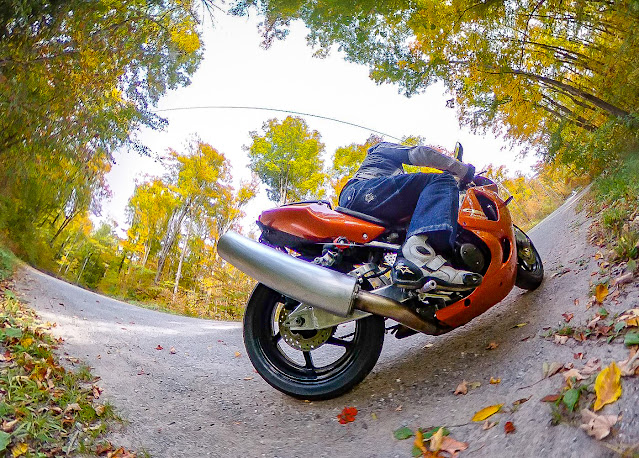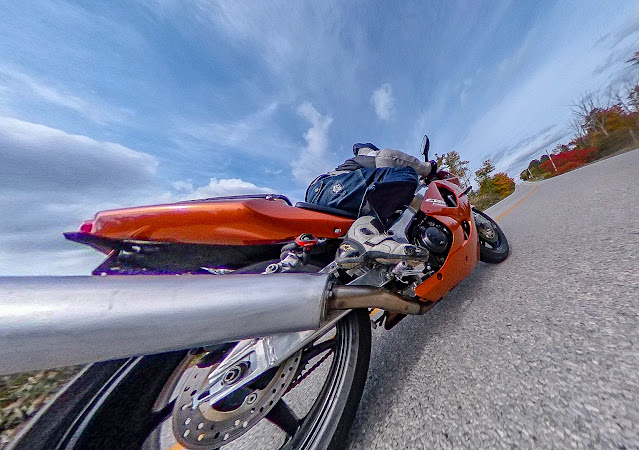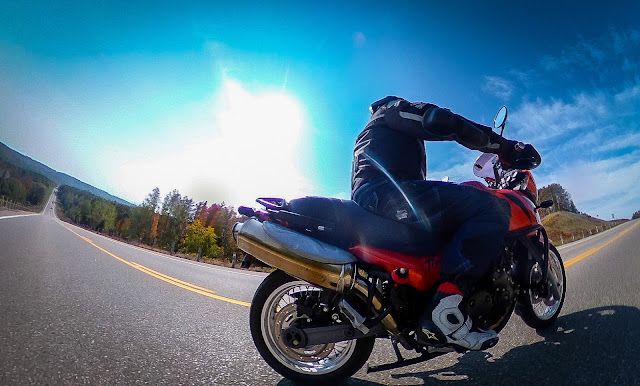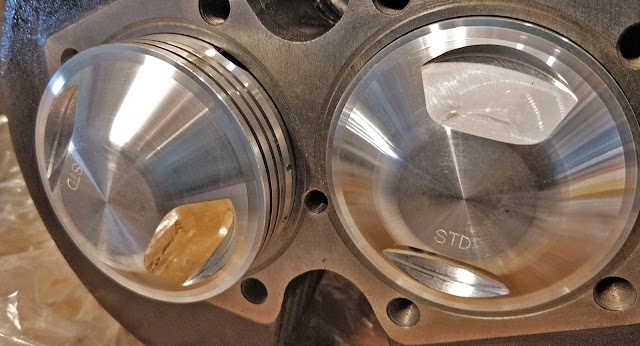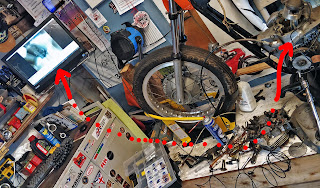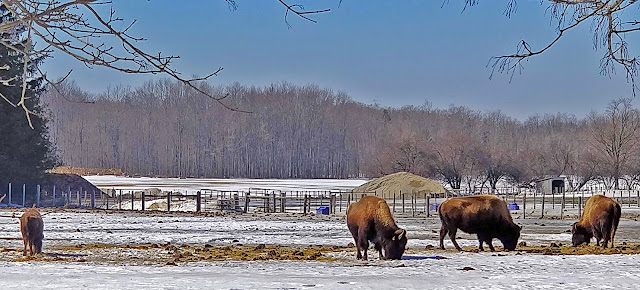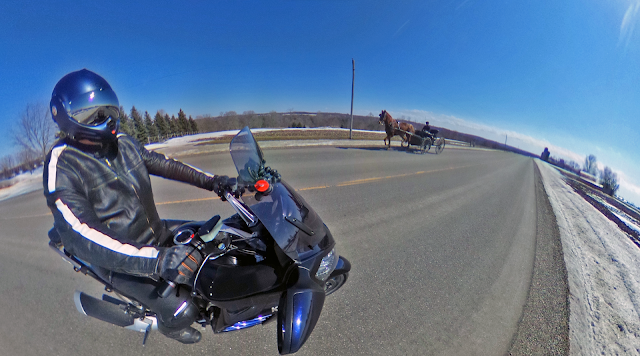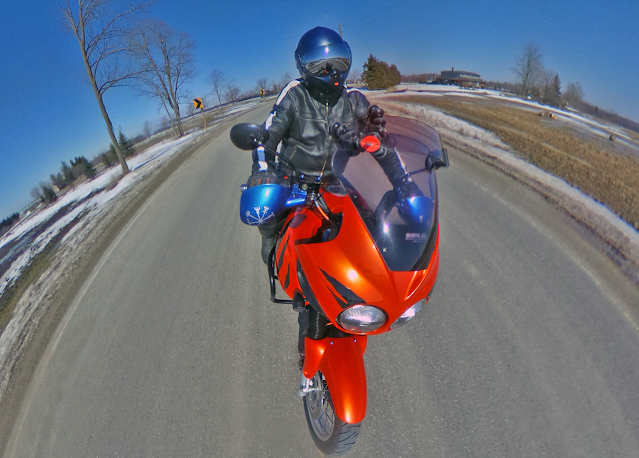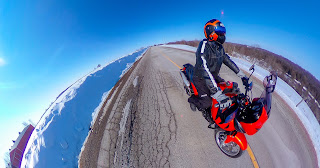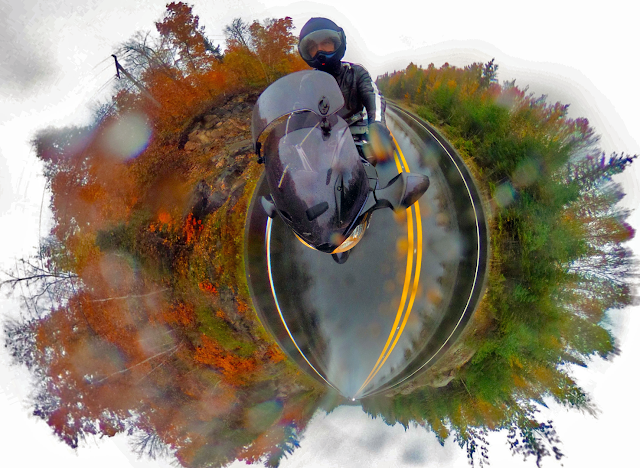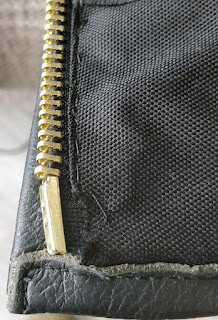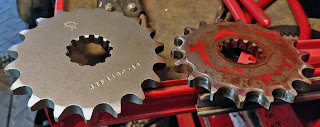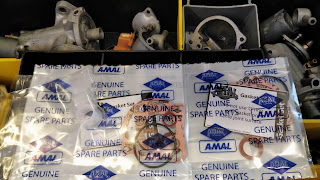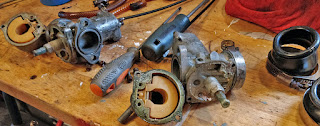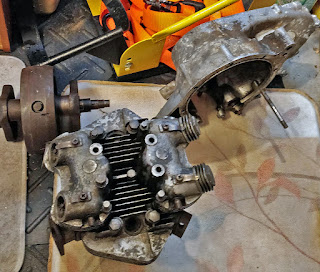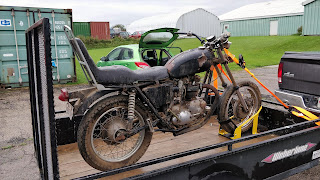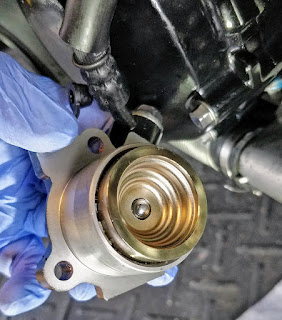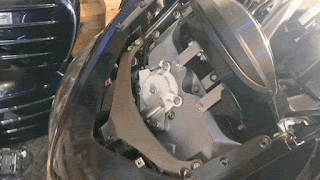I was reading Classic Bike Magazine last month and one of the auctioneers in the back of the mag suggested getting my hands on a copy of The Rudge Book Of The Road if you are looking for an historical read that’ll get you through a long winter and prime you for the coming springtime.
I had a look around and finally found a 1926 version of the book on Amazon for about thirty five bucks.
 |
| If you have a thing for art deco drawings, the Rudge Book of the Road will scratch that itch! |
 |
| My copy was once owned by.. a W. Chapman? |
 |
| Sit on a can of gasoline and light your pipe! Those were the days… |
When your trusty leather bound Rudge Book of the Road isn’t teaching you how to moto-camp, it’s explaining how the roads you’re riding on might be built on top of old Roman roads or how to identify the architecture of the historical buildings you’re touring past. This makes me wonder whether Rudge’s target audience was perhaps a bit more educated than your typical rider, but it also makes me wonder if maybe people were just a bit smarter back then without a phone to immerse them in social media in all the time.
 |
| You’ll learn more from doing things than you will from “all the books or professors in the world”. Something we’ve forgotten in our screen-fueled information revolution? |
 |
| Civilisation continues to makes fools of us all in 2022… |
Give up the cigarettes and alcohol entirely, but do keep the pipe smoking! Can you imagine modern, liability-driven manufacturers encouraging riders to do this sort of thing on their new motorbike? It’s difficult not to get swept up in the enthusiasm and possibility of riding at a time when it was still new to so many people, including the people who built the things! The lack of caution is exhilarating.
The book ends with a complete set of colour maps of the United Kingdom, but not before it talks you through buying your Rudge (this is a marketing piece, remember?). Your fifty pounds (about $1350CAD in today’s dollars) gets you the base model of the Rudge Four – for ten pounds more you can get the sport model. New bikes were much more accessible back in the day!
 |
| Unknown Norfolk is on my shortlist. I wonder how many places I’ll recognize from growing up there fifty years later. |
The Rudge Book of the Road was such an interesting read that I’m going to keep digging for some of these other historical moto-reading options. The RbotR suggests slipping one of these in your (tweed?) jacket pocket to read when you get to your destination and finally put your feet up – with your pipe, of course – after another exhilarating day of riding in the dawn of motorcycling.
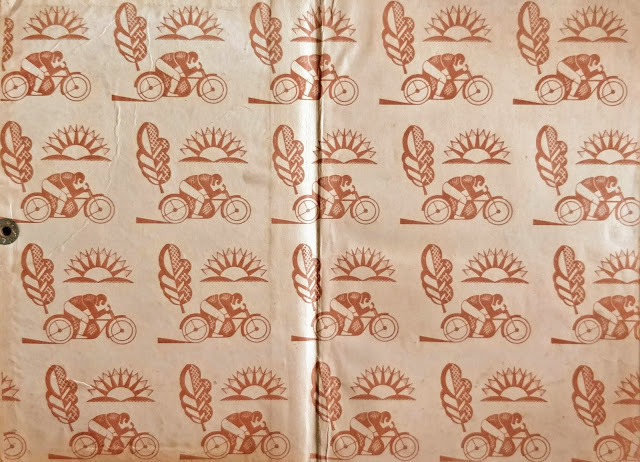 |
| Art deco inside cover wallpaper! |
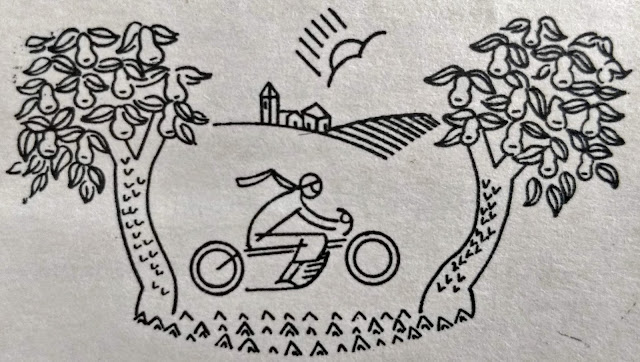 |
| Riding in the dawn of motorcycling… |
from Blogger https://ift.tt/CgoKTPw
via IFTTT




